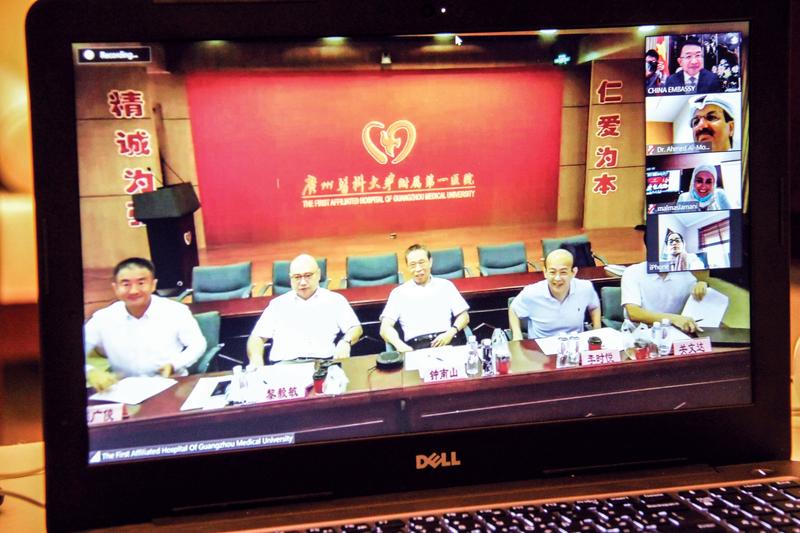Experts say airborne transmission of COVID-19 cannot be ruled out
 Chinese doctors led by Dr Zhong Nanshan hold virtual discussions about the pandemic with Qatari medical professionals and officials on July 8. (YANG YUANYONG / XINHUA)
Chinese doctors led by Dr Zhong Nanshan hold virtual discussions about the pandemic with Qatari medical professionals and officials on July 8. (YANG YUANYONG / XINHUA)
The World Health Organization is sending a team to China this weekend to prepare scientific plans with Chinese counterparts for identifying the zoonotic source of COVID-19.
WHO Director-General Tedros Adhanom Ghebreyesus said on July 7 that the experts will develop the scope and terms of reference for a WHO-led international mission.
“The mission objective is to advance the understanding of animal hosts for COVID-19 and ascertain how the disease jumped between animals and humans,” he said.
Foreign Ministry spokesman Zhao Lijian said on July 8 that China and the WHO have been in close communication and cooperation on source tracing since COVID-19 broke out and China has agreed for the WHO to send its experts to Beijing.
They will work with their Chinese counterparts to prepare scientific plans for identifying the source of the virus, he said.
Zhao reiterated that China believes tracing the virus’ origin is a scientific matter that must be studied by scientists and medical professionals through international cooperation.
He added that identifying the origin of emerging viral diseases has proved complex in past epidemics in different countries, and more scientific research will advance the understanding of animal reservoirs and the route of transmission to humans.
Mike Ryan, executive director of the WHO Health Emergencies Program, noted that the answers to questions such as how the virus can breach the intermediate barrier to humans can be elusive.
“We spent decades trying to do that with Ebola, we spent years trying to do that with MERS, SARS. It takes time,” he said.
Ryan emphasized they will keep an open mind. “Science will stay open to all possibilities,” he said.
WHO experts also said on July 7 that research on the airborne transmission of COVID-19 was not yet definitive but the possibility cannot be ruled out.
At a press conference in Geneva, Benedetta Allegranzi, technical lead for Infection Prevention and Control at the WHO, said that aerosol or airborne transmission, among other fields of research, is “really growing and for which there is some evidence emerging but is not definitive”.
“And therefore, the possibility of airborne transmission in public settings, especially in very specific conditions — crowded, closed, poorly ventilated settings — cannot be ruled out,” she emphasized.
“We acknowledge that there is emerging evidence in this field, as in all other fields regarding the COVID-19 virus and pandemic, and therefore, we believe that we have to be open to this evidence and understand its implications regarding the modes of transmission and also regarding the precautions that need to be taken,” she explained.
“However, the evidence needs to be gathered and interpreted and we continue to support this,” she added.
Dr Maria Van Kerkhove, technical lead for WHO Health Emergencies Programme, said the global health organization has been working on this for several weeks now and engaged with a large number of epidemiologists, clinicians, engineers, mathematical modelers, “to try to consolidate the growing knowledge around transmission”.
“We are producing a scientific brief on summarizing where we are ... so we will be issuing our brief in the coming days and that will outline everything that we have in this area,” she noted.
Xinhua contributed to the report.


